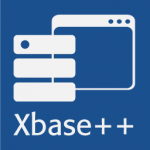Reg-free COM allows using a copy-deployment for applications depending on COM/ActiveX component. As the name implies, Reg-free COM means there's no need to register COM/ActiveX components prior to using them. To achieve this, the application requires one or more manifest files which describe the used COM/ActiveX components. The Windows operating system will then ensure the required COM/ActiveX components are available when it starts your application. Consequently, there is no longer any need to install/register COM/ActiveX components required by an Xbase++ application programatically or via an installer. The following section outlines the procedure for creating the required manifest files.
myapp.exe.manifest
2. Add a so-called component manifest file describing the COM/ActiveX components in the "activex" sub-directory. This component manifest file contains information about the binaries as well as about the COM/ActiveX classes which must be registered during application start-up.
activex.manifest
If one of the rules above are violated, the operating system loader will not find the component manifest file.
Each of these dependent binaries can also have an associated manifest file, giving additional information and listing dependencies. For Reg-free COM, this includes information not only about ActiveX binaries, but also about the COM classes which should be registered by the OS when the application is loaded.
Several tools are available for generating a proper manifest file for the COM/ActiveX components being used by an application. These retrieve the required information from the components installed on the development machine.
An example with manifest files suitable for deploying the ActiveX components shipped with the Xbase++ development package can be downloaded from here.
Procedure:
1. Add a <dependency> section to your application's manifest file for the COM/ActiveX components to be loaded during startup. In the example below, the COM/ActiveX components are located in the sub-directory "activex". This is similar to the way the manifest is already used in Xbase++ apps for requesting a certain version of the Common Controls DLL for enabling visual style-support.myapp.exe.manifest
XML:
<?xml version="1.0" encoding="UTF-8" standalone="yes"?>
<assembly xmlns="urn:schemas-microsoft-com:asm.v1" manifestVersion="1.0">
<assemblyIdentity
type="win32"
name="myapp.exe"
version="1.0.0.0"/>
<!-- Section for announcing application's dependency to COM/ActiveX components
in sub-folder "activex" -->
<dependency>
<dependentAssembly>
<assemblyIdentity
type="win32"
name="activex"
version="1.0.0.0" />
</dependentAssembly>
</dependency>
<!-- Request version 6.0 of the Common Controls DLL for enabling visual styles -->
<dependency>
<dependentAssembly>
<assemblyIdentity
type="win32"
name="Microsoft.Windows.Common-Controls"
version="6.0.0.0"
processorArchitecture="X86"
publicKeyToken="6595b64144ccf1df"
language="*"/>
</dependentAssembly>
</dependency>
</assembly>2. Add a so-called component manifest file describing the COM/ActiveX components in the "activex" sub-directory. This component manifest file contains information about the binaries as well as about the COM/ActiveX classes which must be registered during application start-up.
activex.manifest
XML:
<?xml version="1.0" encoding="UTF-8" standalone="yes"?><assembly xmlns="urn:schemas-microsoft-com:asm.v1" manifestVersion="1.0">
<assemblyIdentity
type="win32"
name="activex"
version="1.0.0.0" />
<file name="mscomct2.ocx">
<comClass
description="Microsoft Animation Control 6.0 (SP6)"
clsid="{B09DE715-87C1-11D1-8BE3-0000F8754DA1}"
threadingModel="Apartment"
progid="MSComCtl2.Animation"
tlbid="{86CF1D34-0C5F-11D2-A9FC-0000F8754DA1}" />
<comClass
description="Animation General Property Page Object"
clsid="{586A6352-87C8-11D1-8BE3-0000F8754DA1}" />
(...)
</file>
<file name="mscomctl.ocx">
<comClass
description="Microsoft ListView Control 6.0 (SP6)"
clsid="{BDD1F04B-858B-11D1-B16A-00C0F0283628}"
threadingModel="Apartment"
progid="MSComctlLib.ListViewCtrl"
tlbid="{831FDD16-0C5C-11D2-A9FC-0000F8754DA1}" />
(...)
</file>
</assemblyIdentity>If one of the rules above are violated, the operating system loader will not find the component manifest file.
Technical Background
For specifying its dependencies on certain binaries, an application lists these so-called dependent assemblies in a <dependency> section of its manifest file, optionally with the required file version, language flavor and other information.Each of these dependent binaries can also have an associated manifest file, giving additional information and listing dependencies. For Reg-free COM, this includes information not only about ActiveX binaries, but also about the COM classes which should be registered by the OS when the application is loaded.
Several tools are available for generating a proper manifest file for the COM/ActiveX components being used by an application. These retrieve the required information from the components installed on the development machine.
- MT.EXE - Included in the Windows SDK
mt.exe -tlb:activexcomponent.ocx -dll:activexcomponent.ocx -out:activexreg.manifest - REGSVR42.EXE - CodeProject project
regsvr42 -client:myapp.exe activexcomponent.ocx
-or-
regsvr42 -client:myapp.exe -dir:directory_with_ocx_files
https://www.codeproject.com/Articles/28682/regsvr42-Generate-SxS-Manifest-Files-from-Native-D
Debugging manifest file issues
Windows writes information about problems in your application's manifest file to "application" section in the system event log. In addition, the sxstrace.exe tool can be used for debugging manifest file issues as follows:- Run sxstrace in a separate command shell prompt like this:
sxstrace Trace -logfile:tmp.log - Start your application
- End tracing by pressing ENTER in the command shell prompt
- Run sxstrace like this:
sxstrace Parse -logfile:tmp.log -outfile:analyzed.txt
An example with manifest files suitable for deploying the ActiveX components shipped with the Xbase++ development package can be downloaded from here.
